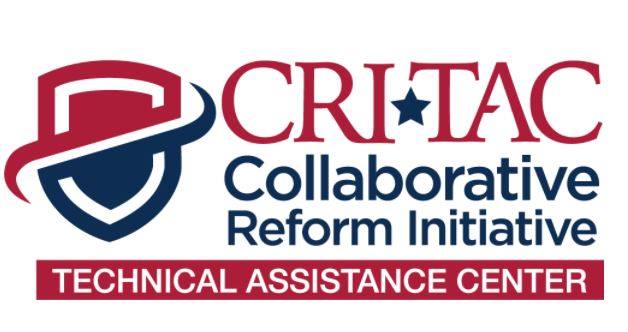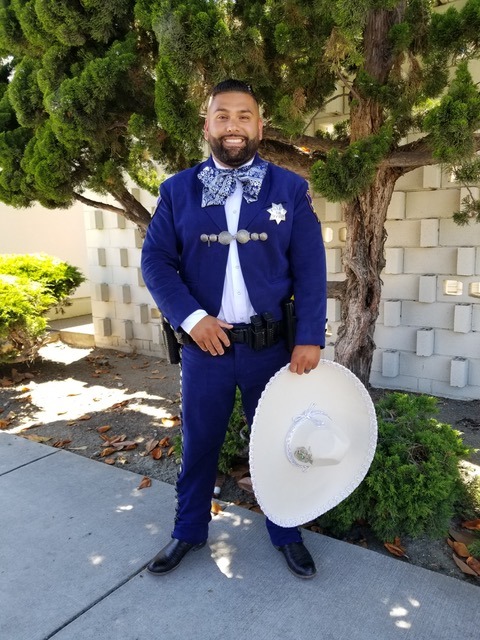Contact Us
To provide feedback on the Community Policing Dispatch, e-mail the editorial board at CPDispatch@usdoj.gov.
To obtain details on COPS Office programs, publications, and resources, contact the COPS Office Response Center at 800-421-6770 or AskCopsRC@usdoj.gov

U.S. Department of Justice
Office of Community Oriented Policing Services
Washington, DC 20530
Like many law enforcement agencies in the United States, the Salinas (California) Police Department (SPD) faced several internal and external challenges which a lack of staffing and financial resources made difficult to address. In 2014, these challenges came to a head in the form of four fatal officer-involved shootings.
Although independent investigations, including a review by the Department of Justice, determined that the actions of officers were justified, the community was outraged, and a riot ensued.
Realizing that the department needed to make significant changes to regain the community’s trust, then Chief Kelly McMillin asked the Department of Justice’s Office of Community Oriented Policing Services for help through their Collaborative Reform Initiative for Technical Assistance.
 A voluntary program developed to support law enforcement agencies seeking positive change through organizational transformation, the Collaborative Reform Initiative provides a wide range of technical assistance solutions customized to the needs of state, local, tribal, campus, and territorial law enforcement agencies, including comprehensive organizational assessments.
A voluntary program developed to support law enforcement agencies seeking positive change through organizational transformation, the Collaborative Reform Initiative provides a wide range of technical assistance solutions customized to the needs of state, local, tribal, campus, and territorial law enforcement agencies, including comprehensive organizational assessments.
Within months of requesting assistance, a team of subject matter experts from the COPS Office and the Institute for Intergovernmental Research (IIR) met with the SPD to review their policies, procedures, accountability systems, training, and use of force, as well as their internal and external relationships.
In 2016, after interviewing members of the department, the community, local government, and other stakeholders, and assessing SPD’s community collaboration, resource allocations, and operational activities, the team published a report detailing 61 findings and 110 recommendations.
The SPD immediately started action on the report’s recommendations, and by 2021, the department had implemented 97 percent of them and was close to adopting the remaining recommendations.
A Voice That Got Action for the Department
 The changes that resulted were remarkable. Over five to six years, the SPD made great strides in strengthening community support and collaboration, reducing crime, improving departmental morale, and acquiring needed resources.
The changes that resulted were remarkable. Over five to six years, the SPD made great strides in strengthening community support and collaboration, reducing crime, improving departmental morale, and acquiring needed resources.
Said SPD Commander John Murray, “If I were to distill the benefits of Collaborative Reform, I would say that it gave our department the voice we needed to get support for the reforms we knew we needed.
“The department was understaffed, underfunded, and lacking in equipment. Collaborative Reform championed the things we were asking for.
“By enabling the purchase of equipment and technology which became a force multiplier, it improved our ability to fight crime. It also gave us more time to spend with people in the community, strengthening those relationships.
“Staffing is better, too—we’ve added some officers. And our staff feel better about the department and the community.
“Training has also changed, putting more emphasis on service and de-escalation, and there is greater emphasis on continuing education. Working with the Monterey County Peace Officers Association, we established a scholarship program. One officer has gotten his college degrees and two other scholarship recipients are working toward completing their B.A.s with the funding.”
A Name to Match the Change in Service
Former Chief Adele Fresé, who led the SPD from 2016 to 2021, echoes Murray’s statement that Collaborative Reform gave the department an independent voice for the resources they knew were needed.
“In 2015, we had 40 homicides and 250 shootings. We knew we needed to get into the community more but didn’t have enough officers to do that. So, we were purely reactionary in our policing. The Collaborative Reform report brought this to the attention of the city council who implemented changes. It added credibility to our requests, giving our voice more impact.
“The department is more engaged in the community now, and relationships with residents have improved since they’ve become more service oriented. The current Chief, Roberto Filice, is out in the community all the time now.
 “Every sworn and non-sworn member of our department went through a community policing course. When we moved into our new building, we put a sign that says ‘The Police Service of Salinas’ on it to let the community, our officers, and our professional staff know that this is what we are all about.
“Every sworn and non-sworn member of our department went through a community policing course. When we moved into our new building, we put a sign that says ‘The Police Service of Salinas’ on it to let the community, our officers, and our professional staff know that this is what we are all about.
“As we changed, I began getting positive comments everywhere I went—community meetings, informal meetings, just walking down the street. And I still see changes taking place. Officers are doing things differently.”
An Award for Excellence in Community Policing
In 2019, the SPD won the James Q. Wilson award for excellence in community policing for taking a park back from drug dealers in one of the city’s toughest areas. The effort was spearheaded by then Assistant, now Acting, Chief Roberto Filice, who not only took down the dealers but got neighbors involved in being the eyes on the street and cleaning up the park.
Said Former Chief Fresé, “This empowered the people. They felt really good about what they contributed and got to know and trust cops to look out for them.
“We also did a lot of outreach in Salinas’s Chinatown where the homeless camp out and there was a lot of drug activity. We have an office there now and have helped unsheltered people get resources they need. I’ve heard countless stories of how this has saved lives.
 “To support transparency, SPD set up a Police Citizens Advisory Committee which oversees everything we propose to do. This had a huge, obvious, and immediate impact, which residents commented on. Meetings went longer because people now got answers to questions, and complaints plummeted. People are more inclined to provide information and help with investigations now, too.
“To support transparency, SPD set up a Police Citizens Advisory Committee which oversees everything we propose to do. This had a huge, obvious, and immediate impact, which residents commented on. Meetings went longer because people now got answers to questions, and complaints plummeted. People are more inclined to provide information and help with investigations now, too.
“Another benefit of Collaborative Reform was that it set the stage for funding. We got approval to fund a staffing study which showed that our numbers were low, and which was why people weren’t seeing officers in their neighborhood.”
In addition to recruiting more people from the local community, which is largely Hispanic, Fresé wanted to deepen cultural ties. So, she turned an SPD uniform into a charro, a traditional Mexican outfit, for any officer who wanted to wear one.
“It gave the officers a feeling of pride. The charro was a huge success. It evoked strong emotions from community members. People lined up to take photos with an SPD officer wearing a charro and sombrero.”
An Almost 70 Percent Reduction in Crime
Adds Salinas Mayor Kimbley Craig, “One of Chief Fresé’s most important accomplishments was the hiring of more women, people of color, and locals who have grandmothers in the community and went to high school here. This really transformed our department.
“But the biggest change I’ve seen was the ability to solve crime. We now have 11 arrests for 13 homicides, whereas we’ve had up to 40 murders a year, many of which went unsolved.
“To see the community now actually assisting our police department in solving crime is wonderful. Our residents are talking to the cops, helping us make Salinas a safer city. There’s been a big shift in relations since we implemented the Collaborative Reform recommendations.”
Asked what she would tell other departments about the Collaborative Reform process, Fresé said, “The report is like a blueprint. You read it and start working on it, though it doesn’t have to be followed chronologically. We revisited some recommendations when we got funding, chipping away at problems.
“When we saw real progress was when I started holding supervisors, who each had five or six recommendations, accountable. They had to give updates on what they were doing at our weekly command staff meetings.
“It takes courage to admit you need to make changes. But the effort involved in Collaborative Reform is more than worth it.”
Faye C. Elkins
Sr. Technical Writer
COPS Office
Images courtesy of the Salinas Police Department.
Subscribe to Email Updates
To sign up for monthly updates or to access your subscriber preferences, please enter your email address in the Subscribe box.






